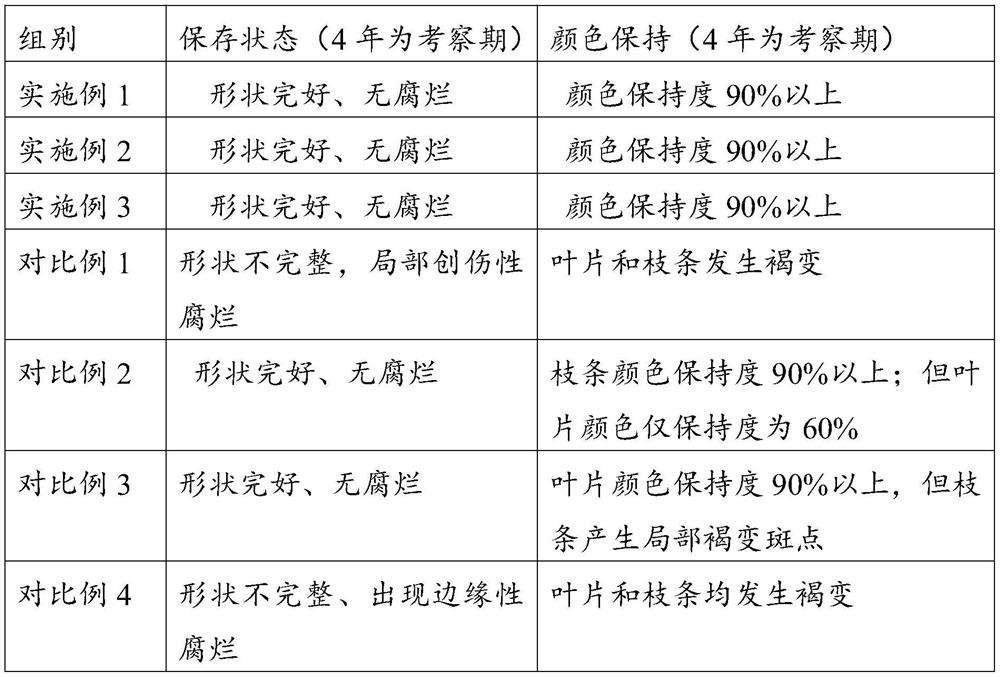A kind of high-efficiency color-preservation, pest-proof and anti-corrosion method for plant specimens
A plant specimen, an efficient technology, applied in the fields of botanical equipment and methods, plant preservation, and application, can solve problems such as large differences in color, yellowing of specimens, and shedding of leaves, achieve a strong three-dimensional sense, solve moisture-proof, prevent The effect of specimen breakage
- Summary
- Abstract
- Description
- Claims
- Application Information
AI Technical Summary
Problems solved by technology
Method used
Image
Examples
Embodiment 1
[0035] A method for highly efficient color preservation, insect-proof and anti-corrosion of wax leaf plant specimens, specifically comprising the following steps:
[0036] (1) Collection:
[0037] Collect fresh and disease-free branches, and the collected branches need to strive for complete branches and leaves.
[0038] (2) trimming and pressing:
[0039] After the specimen is repaired, the leaves and branches are flattened, and the back side of the thicker branches is removed by blades and scissors to make them thinner. The flattened leaves and branches are sandwiched between two absorbent papers. The absorbent paper is made of high-quality straw paper. Put several layers of absorbent paper on both sides, and dry it quickly with an electric iron. When ironing, you need to repeatedly reverse the upper and lower sides of the absorbent paper so that the specimen can be dried evenly in the middle of the two absorbent papers. Iron until the leaves of the specimen are completely ...
Embodiment 2
[0053] On the basis of Example 1, in step (4), before preparing the fixative and preservation solutions, clean and disinfect the utensils, instruments, glass rods, specimen bottles (including bottle caps), etc.: various glassware used for making specimens (Beakers, measuring cylinders, glass rods, specimen bottles and bottle caps) must be washed with washing powder or decontamination powder, and rinsed repeatedly with clean water; then disinfected with 75% alcohol.
Embodiment 3
[0055] On the basis of Example 1, in step (1), remove impurities, dead branches and residual leaves from the collected specimens, after trimming, wash them with clear water, and then use 75% alcohol to disinfect the specimens, and use a rag to dip them in according to the specimens. Use alcohol to scrub all parts of the branches.
PUM
 Login to View More
Login to View More Abstract
Description
Claims
Application Information
 Login to View More
Login to View More - R&D
- Intellectual Property
- Life Sciences
- Materials
- Tech Scout
- Unparalleled Data Quality
- Higher Quality Content
- 60% Fewer Hallucinations
Browse by: Latest US Patents, China's latest patents, Technical Efficacy Thesaurus, Application Domain, Technology Topic, Popular Technical Reports.
© 2025 PatSnap. All rights reserved.Legal|Privacy policy|Modern Slavery Act Transparency Statement|Sitemap|About US| Contact US: help@patsnap.com

